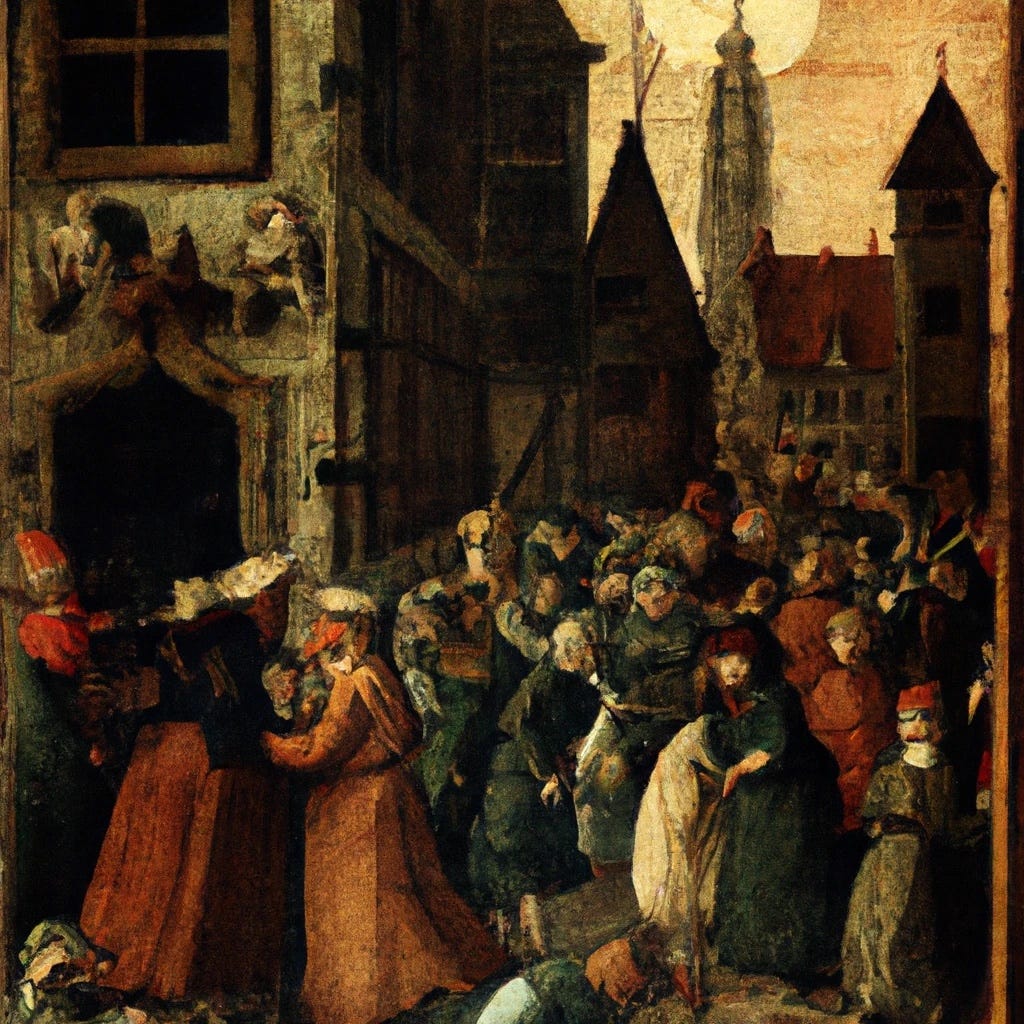In the annals of history, there are events so peculiar and perplexing that they defy rational explanation. One such enigma is the Dancing Plague of 1518, a bizarre occurrence that unfolded in the streets of Strasbourg, France. This peculiar event, which saw hundreds of people spontaneously dancing for days on end, has baffled historians and scientists for centuries. Let’s delve into this curious chapter of history and explore the theories surrounding the mysterious dancing epidemic.
The Dance Begins: Strasbourg, 1518
The year was 1518, and Strasbourg, a bustling city in the Holy Roman Empire, became the stage for an inexplicable phenomenon. It all began when a woman named Frau Troffea stepped into a crowded street and started dancing. What started as a solo dance soon escalated into a frenetic display of involuntary movement that captivated onlookers and drew in more participants.
As days turned into weeks, the number of dancers swelled, reaching several hundred individuals. The afflicted dancers were seemingly unable to stop, even as exhaustion and fatigue set in. Reports from the time describe a disturbing scene of individuals dancing to the point of collapse, their bodies wracked with pain yet compelled to continue their relentless movements.
Theories and Explanations
Centuries later, historians and scientists have attempted to unravel the mystery behind the Dancing Plague of 1518. Various theories have been proposed, each offering a different perspective on this perplexing historical event.
1. Psychogenic Origin:
One prevailing theory suggests that the dancing epidemic had a psychogenic origin. According to this hypothesis, the dancers may have been afflicted by a mass psychogenic illness, wherein psychological factors triggered physical symptoms. Stress, social unrest, and economic hardship prevalent in Strasbourg during that period could have contributed to the manifestation of this bizarre behavior.
2. Ergot Poisoning:
Another intriguing theory ties the dancing plague to ergot poisoning. Ergot is a fungus that can contaminate grains, particularly rye, and produce alkaloids with hallucinogenic properties. Consuming bread made from contaminated grain could have induced hallucinations and spontaneous, uncontrollable movements in the affected individuals, giving rise to the dancing frenzy.
3. Cultural and Religious Factors:
Some historians propose that cultural and religious factors played a role in the dancing epidemic. It was not uncommon for medieval societies to incorporate dance into religious rituals as a form of worship or penance. The dancing plague may have been an extreme and spontaneous expression of such cultural practices, exacerbated by the prevailing socio-religious environment.
4. Medical Conditions:
Medical conditions, such as St. Vitus’ Dance (now known as Sydenham’s chorea), have also been suggested as a potential explanation. This neurological disorder can cause involuntary movements and could have spread through a combination of psychological and environmental factors, leading to the widespread dancing observed in 1518.
The Aftermath and Legacy
The Dancing Plague of 1518 eventually subsided, leaving behind a trail of confusion and speculation. While the exact cause remains elusive, the incident has left an indelible mark on history and popular culture. Artists, writers, and scholars have drawn inspiration from this bizarre episode, incorporating it into various works of fiction and analysis.
In retrospect, the dancing plague serves as a reminder of the complexity of human behavior and the limitations of historical understanding. The enigma of Strasbourg’s dancing epidemic persists, challenging us to contemplate the interplay of psychological, environmental, and cultural factors in shaping the course of events.
FAQs (Frequently Asked Questions)
Q1: Was the Dancing Plague of 1518 an isolated incident? A1: The Dancing Plague of 1518 is one of the most well-documented instances of mass psychogenic illness, but similar events have occurred throughout history. Other notable cases include the dancing mania outbreaks in the 14th to 17th centuries across Europe.
Q2: Did everyone who participated in the dancing plague survive? A2: While historical records are not comprehensive, it is likely that not all participants survived the dancing plague. The physical strain, exhaustion, and potential underlying health conditions may have contributed to casualties during the prolonged and intense dancing.
Q3: Are there modern parallels to the Dancing Plague of 1518? A3: While modern instances of mass psychogenic illness exist, they typically manifest in different forms. The dancing plague of 1518 remains a unique historical event, with no direct contemporary parallels, although the understanding of psychogenic illnesses has evolved over time.

